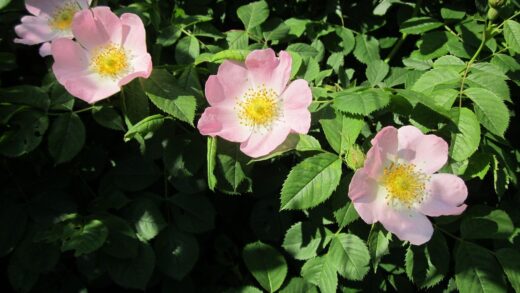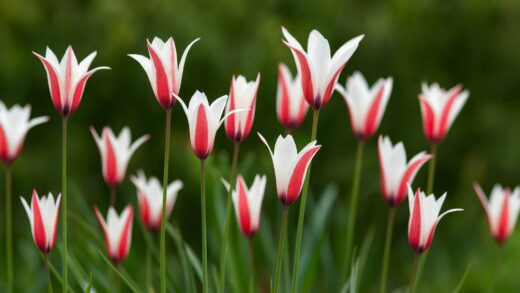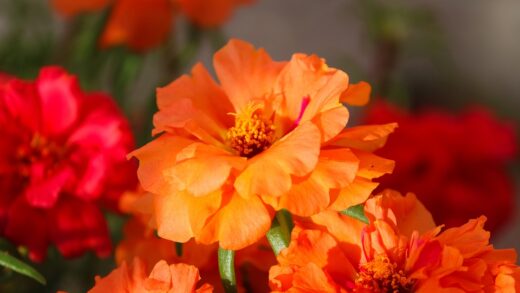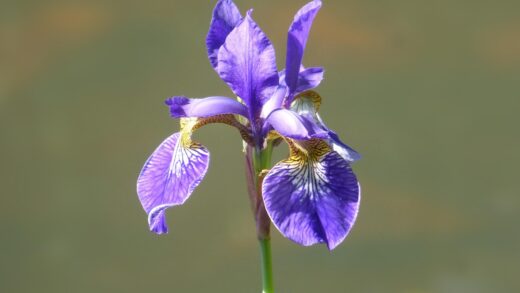The Japanese ornamental cherry, celebrated globally for its breathtaking spring blossoms, requires thoughtful and consistent care to thrive and reach its full aesthetic potential. Understanding its fundamental needs is the first step towards cultivating a healthy, vibrant tree that will grace the landscape for many years. This involves a holistic approach, considering everything from its initial placement in the garden to its ongoing nutritional and structural requirements. Proper care ensures not only a spectacular floral display but also a robust tree that is resilient against environmental stressors, pests, and diseases, making it a truly rewarding horticultural endeavor.
Proper site selection is arguably the most critical factor in the long-term health of an ornamental cherry. These trees demand a location that receives at least six hours of direct sunlight each day to facilitate vigorous growth and abundant flowering. Insufficient light can lead to sparse blooms, elongated and weak branches, and a general lack of vitality. The chosen site should also be sheltered from strong, prevailing winds, which can damage the delicate blossoms and even break branches. Considering the tree’s mature size is also paramount to prevent future issues with overcrowding or interference with buildings and utility lines.
The soil environment is another cornerstone of successful cultivation, as these trees have specific preferences that must be met. They flourish in well-drained, fertile soil that is rich in organic matter, which helps retain adequate moisture without becoming waterlogged. Poorly drained or heavy clay soils can lead to root rot, a fatal condition for many tree species, including the ornamental cherry. It is highly advisable to amend the native soil with compost or well-rotted manure before planting to improve its structure, aeration, and nutrient content.
Beyond the initial setup, ongoing maintenance practices throughout the year are essential for keeping the tree in optimal condition. This includes appropriate watering, especially during its establishment phase and dry periods, as well as a balanced fertilization program to supply necessary nutrients. Regular inspection for signs of pests and diseases allows for early intervention, preventing minor issues from escalating into significant problems. Pruning, although it should be done judiciously, is also a key aspect of care, helping to maintain the tree’s desired shape and structural integrity.
Ultimately, caring for a Japanese ornamental cherry is a commitment that pays dividends in the form of unparalleled seasonal beauty. A well-cared-for tree becomes a magnificent focal point, heralding the arrival of spring with an explosion of pink or white flowers. By respecting its basic requirements for sun, soil, and ongoing attention, any gardener can successfully cultivate this iconic tree. The effort invested in its well-being is returned manifold through its stunning visual impact and the serene atmosphere it creates.
More articles on this topic
Foundational soil and site preparation
Selecting the perfect location is the foundational first step in ensuring a long and healthy life for your Japanese ornamental cherry. These trees are sun-lovers, requiring a position that is bathed in full sunlight for a minimum of six to eight hours per day. This exposure is crucial for energy production through photosynthesis, which directly fuels the development of a dense canopy and a profuse display of flowers. A location that is perpetually shaded or receives only dappled light will result in a leggy, weakened tree with significantly fewer blossoms, defeating the primary purpose of planting this ornamental species.
Once an adequately sunny spot has been identified, attention must turn to the quality of the soil. Ornamental cherries are intolerant of “wet feet,” meaning they cannot survive in soil that remains waterlogged for extended periods. The ideal substrate is a loamy, fertile soil that offers excellent drainage, allowing excess water to percolate away from the root zone freely. Before planting, it is wise to conduct a simple drainage test by digging a hole and filling it with water; if it takes more than a few hours to drain, the site’s drainage is inadequate and must be improved.
Improving soil conditions is a proactive measure that yields significant benefits for the tree’s establishment and future growth. For heavy clay soils, incorporating generous amounts of organic matter such as compost, leaf mold, or well-rotted manure is essential. This amendment helps to break up the dense clay particles, creating better aeration and drainage. Conversely, in overly sandy soils, the same organic matter will improve water and nutrient retention, creating a more hospitable environment for the roots to develop.
The soil’s pH level is another important consideration, as Japanese ornamental cherries prefer a slightly acidic to neutral range, typically between 6.0 and 7.0. Most garden soils fall within this range, but it is always prudent to perform a soil test to be certain. If the soil is too alkaline, its pH can be lowered over time by applying soil acidifiers like elemental sulfur or incorporating acidic organic materials like pine bark mulch. Ensuring the correct pH allows the tree to efficiently absorb essential nutrients from the soil, preventing deficiencies that can hinder its growth and health.
More articles on this topic
Ongoing watering and moisture management
Proper watering practices are vital, particularly during the first few years after planting as the tree establishes its root system. A newly planted ornamental cherry requires consistent moisture to prevent transplant shock and encourage the roots to grow outwards into the surrounding soil. During the first growing season, a deep watering once or twice a week is generally sufficient, depending on rainfall and temperature. The goal is to keep the soil consistently moist but not saturated, allowing the top inch or two of soil to dry out between waterings.
As the tree matures, its watering needs will change, becoming more resilient to short-term dry spells due to its more extensive root system. However, during prolonged periods of drought or extreme heat, even established trees will benefit from supplemental irrigation. A long, slow soaking with a soaker hose or drip irrigation system is far more effective than a brief, superficial spray from a sprinkler. This method ensures that the water penetrates deeply into the soil profile, reaching the entire root zone rather than just evaporating from the surface.
Recognizing the signs of both under-watering and over-watering is a key skill in maintaining the health of your tree. An under-watered cherry tree may exhibit wilting or drooping leaves, premature leaf drop, and a general lack of vigor. Conversely, an over-watered tree is at high risk of root rot, which can manifest as yellowing leaves (chlorosis), stunted growth, and a soft, decaying root system. Careful observation and checking the soil moisture with your finger before irrigating are the best ways to avoid these common problems.
Applying a layer of organic mulch around the base of the tree is a highly beneficial practice for moisture management. A two- to three-inch layer of wood chips, shredded bark, or compost helps to conserve soil moisture by reducing evaporation from the surface. Mulch also suppresses weed growth, which would otherwise compete with the tree for water and nutrients, and it helps to regulate soil temperature, keeping the roots cooler in summer and warmer in winter. Be sure to keep the mulch a few inches away from the trunk itself to prevent moisture buildup against the bark, which can encourage disease.
Nutrition and fertilization strategy
Providing adequate nutrition is crucial for promoting vigorous growth and ensuring a spectacular bloom display on your Japanese ornamental cherry. A balanced fertilization program replenishes essential nutrients in the soil that the tree consumes over time. The ideal time to fertilize is in the early spring, just as new growth begins to emerge. This timing provides a nutrient boost that supports the development of new leaves, branches, and, most importantly, the flower buds for the current season.
When selecting a fertilizer, a balanced, slow-release granular formula is often the best choice for ornamental trees. Look for a product with a balanced N-P-K (Nitrogen-Phosphorus-Potassium) ratio, such as 10-10-10 or 14-14-14. Nitrogen supports lush foliage growth, phosphorus is vital for root development and flower production, and potassium contributes to overall plant health and hardiness. Slow-release formulations are preferable as they provide a steady supply of nutrients over several months, reducing the risk of nutrient burn from a single, concentrated application.
Applying fertilizer correctly is just as important as choosing the right product. The fertilizer should be spread evenly over the soil surface, starting about a foot away from the trunk and extending out to the tree’s dripline (the outermost circumference of the canopy). Rake the granules lightly into the top layer of soil or mulch and then water the area thoroughly. This watering helps to dissolve the fertilizer and carry the nutrients down into the root zone where they can be absorbed by the tree.
It is important to avoid over-fertilizing, as this can be more harmful than not fertilizing at all. Excessive nitrogen, in particular, can stimulate rapid, weak foliage growth at the expense of flowers and can make the tree more susceptible to pests like aphids. If the tree is growing well, has good color, and flowers profusely, it may not require annual fertilization, especially if it is growing in nutrient-rich soil. Always follow the application rates recommended on the fertilizer packaging and adjust based on the tree’s observed performance.
Pruning for health and aesthetics
Pruning is an important aspect of care, but for Japanese ornamental cherries, it should be approached with a “less is more” philosophy. These trees generally develop a naturally graceful form without extensive intervention. The primary goals of pruning should be to remove any dead, damaged, or diseased branches, which can be done at any time of year as soon as they are noticed. This sanitation pruning helps to prevent the spread of diseases and allows the tree to direct its energy towards healthy growth.
The best time for any structural or formative pruning is in the late spring or early summer, immediately after the tree has finished flowering. Pruning at this time minimizes the impact on the following year’s bloom display, as the tree will have the entire growing season to heal and form new flower buds. Avoid heavy pruning in the late fall or winter, as this can make the tree more vulnerable to fungal diseases like silver leaf and bacterial canker, which are more active in the cool, damp conditions of the dormant season.
When making pruning cuts, focus on improving the tree’s structure and air circulation. Remove any branches that are crossing or rubbing against each other, as this can create wounds in the bark that serve as entry points for pathogens. Also, thin out overly congested areas in the canopy to allow more light and air to penetrate the interior of the tree. This not only promotes better foliage health but also helps to showcase the elegant branching structure that is characteristic of many ornamental cherry varieties.
Always use sharp, clean pruning tools to make precise cuts. For smaller branches, a pair of bypass pruners or loppers is ideal, while a pruning saw should be used for larger limbs. Make your cuts just outside the branch collar, which is the slightly swollen area where the branch joins the trunk or a larger limb. This technique allows the tree’s natural defense mechanisms to seal the wound more effectively. Never apply pruning paint or wound dressing, as research has shown that these products can trap moisture and hinder the natural healing process.
Pest and disease management
Proactive monitoring is the cornerstone of effective pest and disease management for Japanese ornamental cherries. Regularly inspecting the leaves, branches, and trunk for any signs of trouble allows for early detection and intervention before an issue becomes widespread. Common pests to look out for include aphids, which cluster on new growth and can cause distorted leaves, and scale insects, which appear as small bumps on the branches and suck sap from the tree. Common diseases include brown rot, which affects flowers and twigs, and cherry leaf spot, which causes small, dark spots on the foliage.
Many potential pest problems can be managed using environmentally friendly methods. A strong jet of water from a hose can often be enough to dislodge a small aphid population. For more persistent infestations, insecticidal soaps or horticultural oils can be effective; these products work by smothering the pests and have a lower impact on beneficial insects compared to broad-spectrum chemical insecticides. Encouraging natural predators like ladybugs and lacewings into the garden by planting a diversity of flowering plants can also provide a natural and sustainable form of pest control.
Good cultural practices are fundamental to preventing disease outbreaks. Providing the tree with its ideal growing conditions—full sun, well-drained soil, and adequate air circulation—is the first line of defense, as a healthy tree is naturally more resilient to pathogens. Proper watering techniques, such as using a soaker hose at the base of the tree rather than overhead sprinklers, help to keep the foliage dry and reduce the likelihood of fungal diseases that thrive in moist conditions. Raking up and disposing of fallen leaves and fruit in the autumn is also crucial, as many fungal spores can overwinter in this debris.
In cases where a disease has taken hold, proper identification is key to selecting the appropriate treatment. For fungal issues like brown rot or leaf spot, pruning out the infected twigs and branches can help to reduce the source of the infection. In regions with high disease pressure, a preventative fungicide application in early spring as the buds begin to swell may be necessary. Always choose a product that is specifically labeled for use on ornamental cherries and follow the application instructions carefully to ensure both effectiveness and safety.




















